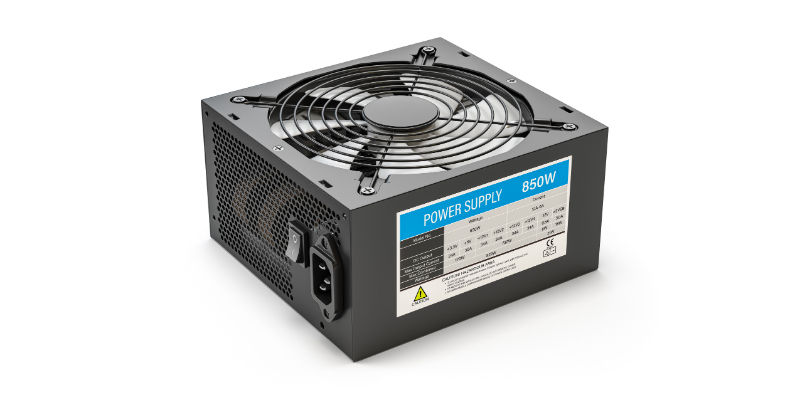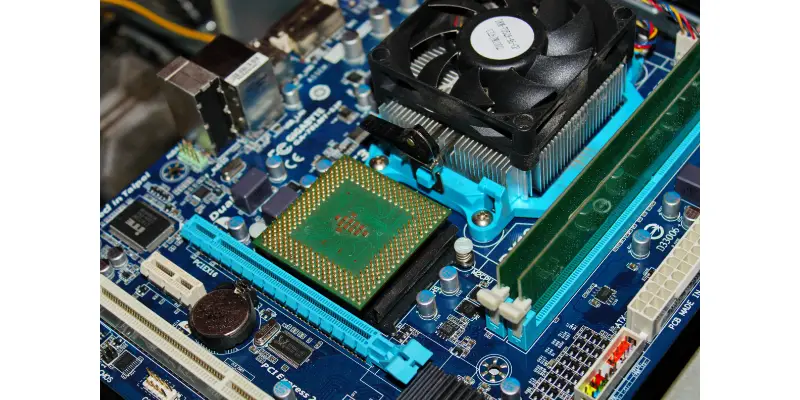Disclaimer: This post may contain affiliate links, meaning we get a small commission if you make a purchase through our links, at no cost to you. For more information, please visit our Disclaimer Page.
Power supplies are one of the most overlooked components in a computer. They provide power to all of your other parts, so they’re essential for proper computer performance. So can they be used for all motherboards?
Not every power supply unit (PSU) is compatible with all motherboards as there can be a difference in the configuration between the two equipment. However, most motherboards and PSUs on the market follow the ATX standard of configuration. So, they will be compatible most of the time.
Table of Contents
Do All PSU Fit All Motherboards?
When trying to fit a PSU to any motherboard, the main determining factor is the configuration specification. Manufacturers have to design their power supply units and motherboards according to one of these specifications.
If the configuration of the PSU matches the one on the motherboard, then that power supply will fit that PC built. This is what we call a compatible motherboard and PSU.
Now, the most common standard for this configuration is the “Advanced Technology eXtended” or the “ATX” for short. Tech giant Intel introduced this specification back in 1995 and since then, has become the go-to standard when building a motherboard.
And all other components of a computer, such as the CPU, GPU, SATA storage drives, PSU, etc are mostly built with the ATX configuration in mind. Meaning that the individual parts can be changed and upgraded without requiring a new motherboard. This standardization of motherboards has made PC building more efficient and less of a hassle.
However, this does not mean that there are no other types of configurations out there. For example, since the invention of the original ATX motherboard, there have been numerous variations of this form factor. This includes the micro-ATX, mini-ATX, or mini-ITX, etc.
And the same goes for the power supply unit as not all of them have the same types of connectors or similar length cables. For instance, you may have a 24-pin power supply connector but your motherboard features a 20-pin slot and vice-versa.
Fortunately, most of the 24-pin PSU can still work with the 20-pin motherboard and the opposite is also true. But there are exceptions to this rule. So, you may have to buy additional adapters just to fit the PSU to the motherboard.
There is another potential problem if the PSU has fewer pins than the motherboard. So, for example, let’s say you have attached a 20-pin PSU to a 24-pin motherboard. You see, the pins have a great say in determining the power that your motherboard will receive. So, not having those extra 4 pins will decrease the amount of power being supplied.
Normally, this will not cause too much of an issue, since most of the time you will not be needing the full amount of power. But there are several instances where a PC has to perform to its limit. And that is when it needs a greater amount of power to perform at that level. And not having the proper PSU will prevent you from achieving it.
How Do I Know If My PSU is Compatible with My Motherboard?
Usually, pre-built PCs will come with a compatible motherboard and power supply unit. But with a custom-made desktop, you need to choose the motherboard and PSU individually. And you need to get this right as choosing the right PSU is vital.
Now, there are several ways to check whether the motherboard you have chosen is compatible with a PSU or not. One easy way is to ask the customer service provider during your purchase of the PC. They will be able to guide you through the process and pick out PSUs that the motherboard will support.
Go to PCPARTPICKER.COM
This is a great website to match and examine various parts of a computer individually, from different specs to different brands. And here is how you do it:
- First, check the model of your motherboard or your PSU. The information you need should be written on the body of the hardware or the invoice or receipt. If there is a separate guide for all the parts, you can check that for the model’s name and number.
- Then, head over to pcpartpicker.com.
- If you click the “Browse Products” headline, you will see a drop-down menu showing all the hardware related to building a PC. Pick the motherboard or the PSU option.
- Now, you will see a large list of items showing you various motherboards and power supplies. From here, pick the item that you own or want to check.
- You will find yourself on the product detail page. Simply scroll down this page until you see the options for “view compatible motherboards/case/power supplies/etc.”, which should be on the left-hand side of your screen.
- If you are checking for a motherboard, click on “view compatible power supplies”.
- If you are on the product page of a PSU, click on “view compatible motherboards”.
- You will now find a list of all the compatible PSUs for a motherboard or vice-versa. If your motherboard is compatible with the PSU you currently have or plan on purchasing, it will show up on this list. You just type in the name of the specific part and it will come up.
This is a quick and easy way of checking the compatibility between your motherboard and PSU as well as other parts of the computer.
Can a Motherboard Damage a PSU?
Just like a bad PSU can damage a motherboard, the opposite can also be true. Fortunately, this is a rare occurrence but it is something to be mindful of.
The problem here is not with the quality of the motherboard or the power it is consuming. Rather the thing you have to worry about is whether or not you have mounted the motherboard properly.
The motherboard is like a very big circuit board that directs electricity to all the parts attached to it such as the CPUs, GPUs, storage drives, cooling systems, etc. And the motherboard gets this power from the power supply unit.
Now, if the motherboard somehow touches any metal parts, the electricity will deviate from its intended path and go all over the place. This will cause short circuits in the motherboard, which can fry any hardware attached to the board, including the PSU.
This is why you have to mount motherboards properly to the case by attaching standoffs.
Can a PSU Damage a Motherboard?
A faulty or insufficient PSU can lead to various performance issues and very possibly end up damaging your motherboard. This is why picking the right power supply for your computer is essential.
Typically, people will select a power supply unit that provides some overhead space or breathing room. Meaning, if your computer runs on 500 wattages on average, you should get a PSU that can supply 600 wattages continuously. Because if the PC starts overclocking for whatever reason, the PSU will be able to handle the added demand.
Now, what will happen if the PSU is inadequate for your computer, regardless if it is overclocking or not? Well, your computer will still try to draw the amount of power it needs, but the power supply will simply fail to provide it. This can cause a multitude of different problems.
The extra power load can very well cause the PSU to heat up to a dangerous level. And if this happens on multiple occasions or for an extended period, it can cause damage to the actual unit as well as other components due to the excessive heat. Worst of all, a malfunctioning PSU is a potential fire hazard.
The same applies to a faulty or deteriorating PSU. A power supply that has significant wear and tear will not provide the same output as it once did. This can also lead to performance issues and end up damaging the motherboard.
Conclusion
The power supply unit is often an overlooked component of PC building yet it is crucial. So, if you are buying a new computer or planning to upgrade the old one, consider the PSU carefully and pick the right one.


